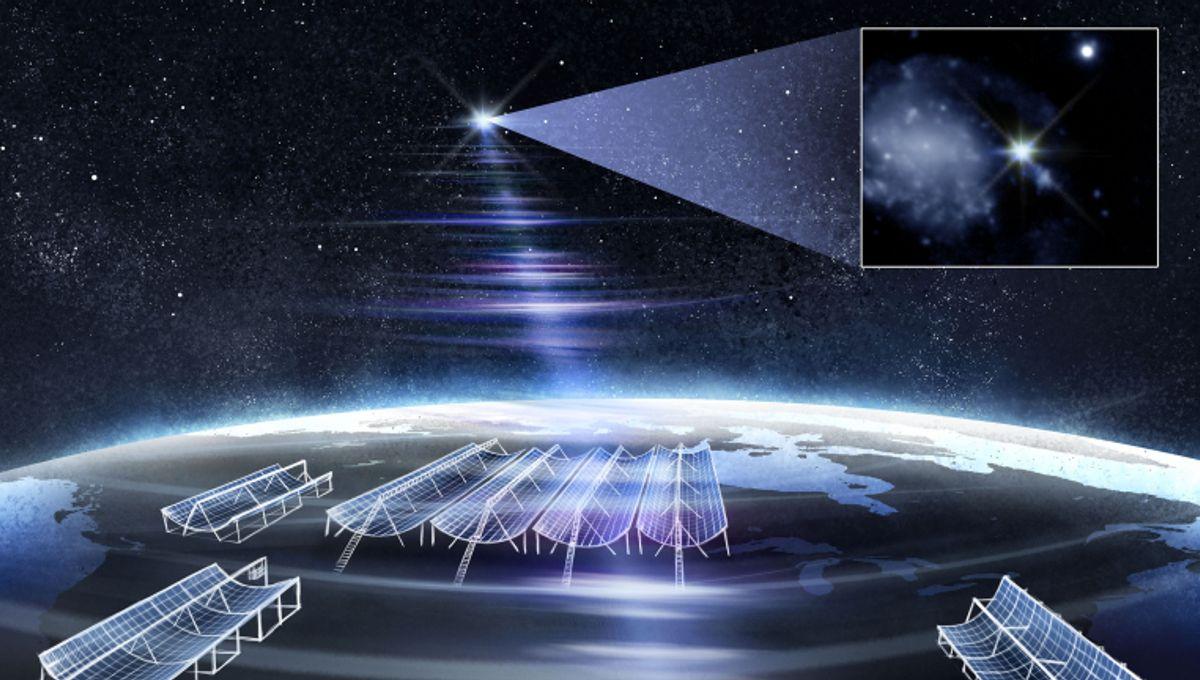-
Fil d’actualités
- EXPLORER
-
Pages
-
Blogs
-
Forums
Brightest Fast Radio Burst Yet Discovered 130 Million Light-Years Away, In Our Cosmic Neighborhood

Brightest Fast Radio Burst Yet Discovered 130 Million Light-Years Away, In Our Cosmic Neighborhood
Fast radio bursts (FRBs) are mysterious emissions of radio waves that pepper the cosmos. For a few milliseconds, they can outshine every other radio source in a galaxy, and the latest detected by astronomers has just outshone them all. That’s not all, either; it might finally provide precious details about the production of some of these mysterious events.
The rest of this article is behind a paywall. Please sign in or subscribe to access the full content. FRBs come in two varieties: repeating and non-repeating. The repeating ones happen periodically, and the most famous are believed to be caused by a magnetar – a neutron star with a prodigious magnetic field, orbiting another object, with interactions that generate the powerful flashes. For the non-repeating ones, the explanations are vaguer. It could still be a magnetar, or maybe a merger of neutron stars or black holes, or a specific kind of supernova. And possibly, all these events and others might be responsible. The newly discovered FRB, FRB 20250316A, was detected on March 16 of this year, and it has now been nicknamed RBFLOAT for “radio brightest flash of all time.” It is in the order of 1,000 times brighter than the average FRB. It comes from the edge of spiral galaxy NGC4141, in the constellation Ursa Major. This galaxy is about 130 million light-years away, very close to our own Milky Way. “Cosmically speaking, this fast radio burst is just in our neighborhood,” Kiyoshi Masui, associate professor of physics and affiliate of MIT’s Kavli Institute for Astrophysics and Space Research, said in a statement seen by IFLScience. “This means we get this chance to study a pretty normal FRB in exquisite detail.” The team was able to study the region near the FRB with never-before-seen detail, confining the source to an area of about 40 light-years. That is tiny, all things considered, but not small enough to provide an unequivocal source. However, the team was able to confirm the lack of other radio sources, and the fact that the area is far-off away from a region of star formation. The data disfavor a recent supernova being behind it, but can’t rule out a compact object. While some scenarios suggest a young magnetar inside a star-forming region could be a great source of non-repeating FRBs, the interactions of an older magnetar might also produce something extreme. “As we’re getting these much more precise looks at FRBs, we’re better able to see the diversity of environments they’re coming from,” explained MIT physics postdoc Adam Lanman. “Imagine we are in New York and there’s a firefly in Florida that is bright for a thousandth of a second, which is usually how quick FRBs are,” added MIT Kavli graduate student Shion Andrew. “Localizing an FRB to a specific part of its host galaxy is analogous to figuring out not just what tree the firefly came from, but which branch it’s sitting on.” The event was found thanks to the Canadian Hydrogen Intensity Mapping Experiment (CHIME) with the addition of the CHIME Outriggers, three miniature CHIME observatories spread across North America. CHIME has spotted about 4,000 FRBs since 2018, and with the Outriggers, they can now be more easily and more precisely localized. The study is published in The Astrophysical Journal Letters, and a draft version is available on arXiv.


